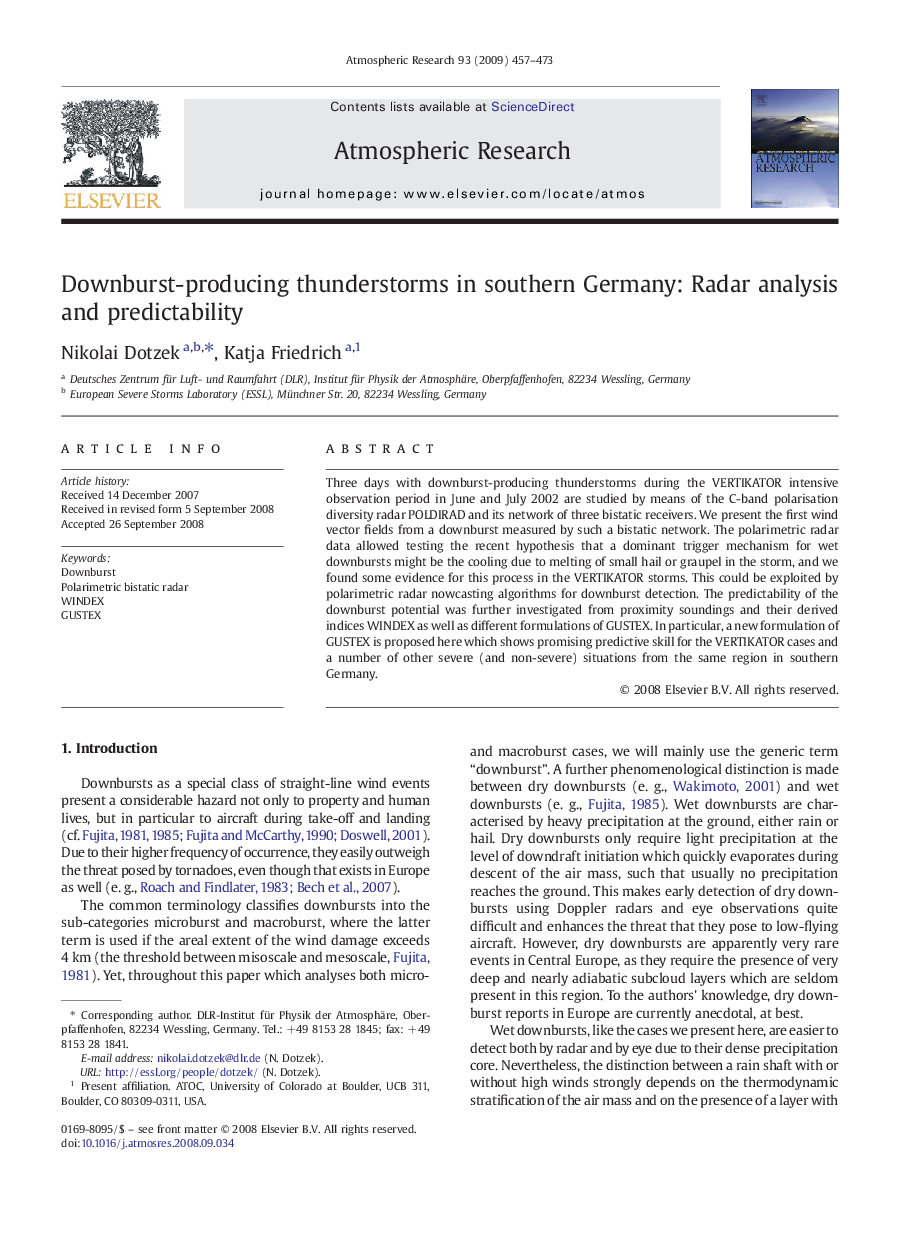| Article ID | Journal | Published Year | Pages | File Type |
|---|---|---|---|---|
| 4450739 | Atmospheric Research | 2009 | 17 Pages |
Three days with downburst-producing thunderstorms during the VERTIKATOR intensive observation period in June and July 2002 are studied by means of the C-band polarisation diversity radar POLDIRAD and its network of three bistatic receivers. We present the first wind vector fields from a downburst measured by such a bistatic network. The polarimetric radar data allowed testing the recent hypothesis that a dominant trigger mechanism for wet downbursts might be the cooling due to melting of small hail or graupel in the storm, and we found some evidence for this process in the VERTIKATOR storms. This could be exploited by polarimetric radar nowcasting algorithms for downburst detection. The predictability of the downburst potential was further investigated from proximity soundings and their derived indices WINDEX as well as different formulations of GUSTEX. In particular, a new formulation of GUSTEX is proposed here which shows promising predictive skill for the VERTIKATOR cases and a number of other severe (and non-severe) situations from the same region in southern Germany.
